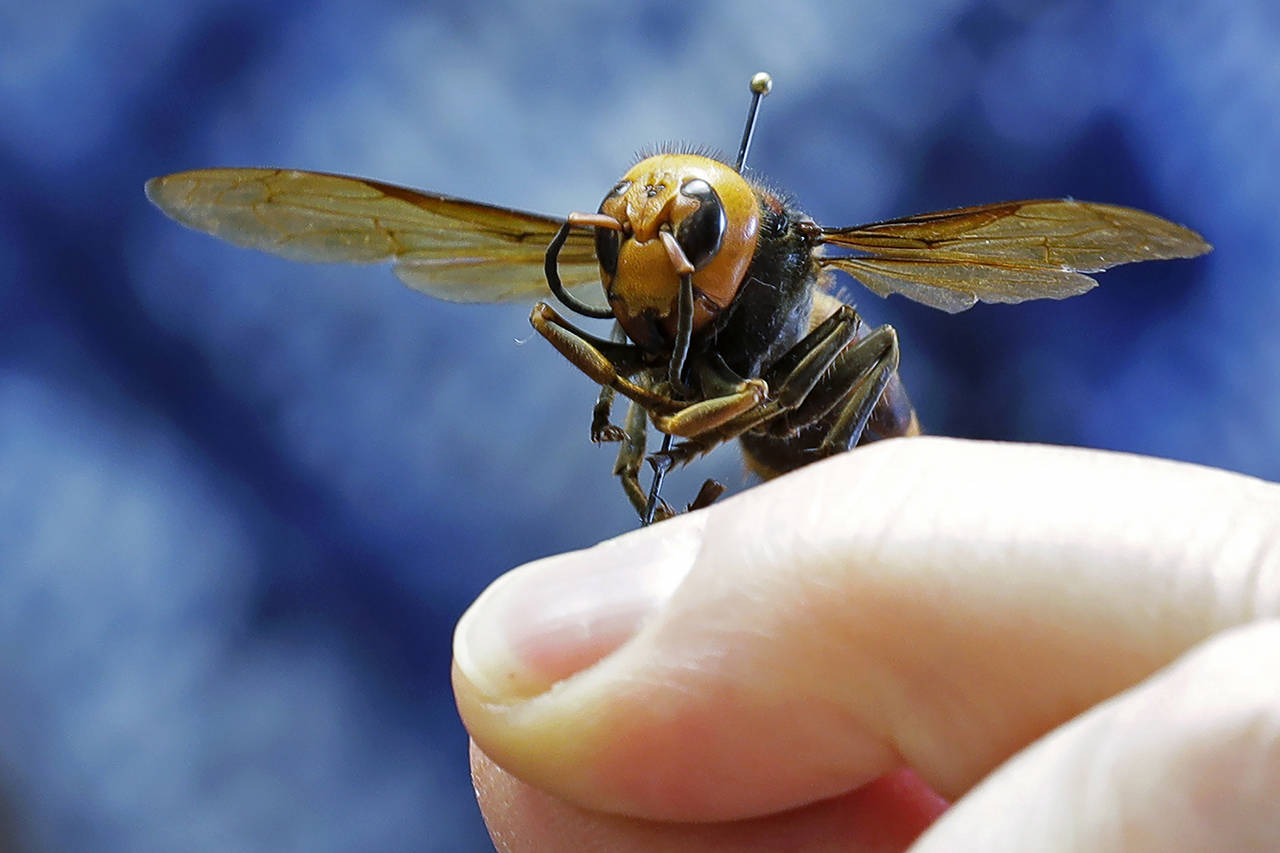By Nicholas K. Geranios / Associated Press
SPOKANE — The second sighting of a so-called murder hornet this year was reported by a person in Whatcom County this week, the Washington state Department of Agriculture said Thursday.
The Asian giant hornet was reported by a Whatcom County resident on Wednesday. Entomologists confirmed the sighting Thursday. The resident’s report included a photograph of the hornet attacking a paper wasp nest in a rural area east of the town of Blaine, about two miles from where state workers eradicated the first Asian giant hornet nest in the United States last October.
The world’s largest hornet can sometimes be lethal to humans.
“This hornet is exhibiting the same behavior we saw last year — attacking paper wasp nests,” said state entomologist Sven Spichiger, who has been leading the fight against the invaders. “If you have paper wasp nests on your property and live in the area, keep an eye on them and report any Asian giant hornets you see. Note the direction they fly off to as well.”
The Department of Agriculture will set traps in the area in an attempt to catch a live hornet, tag it, and track it back to the nest. The government of British Columbia will also set traps in Canada because this detection was approximately half a mile from the border, the state said.
Public sightings of Asian giant hornets continue to be critical to locating the pest, officials said.
This year there have only been two confirmed reports in Washington, and both were from public reports. There have been no confirmed reports in Canada.
In June, state officials announced the first report this year of an Asian giant hornet in a town north of Seattle. A dead and dried-out specimen was collected off a lawn in Marysville, Spichiger said.
Because of its withered condition and the fact that male giant hornets don’t typically emerge until July, agriculture officials believe that hornet was likely from a previous season and just recently found.
The 2-inch-long (5-centimeter-long) invasive insects, first found near the U.S.-Canadian border in December 2019, are native to Asia and pose a threat to honeybees and native hornet species. While not particularly aggressive toward humans, their sting is extremely painful and repeated stings, though rare, can kill.
The world’s largest hornet is much more of a threat to honeybees that are relied on to pollinate crops. They attack hives, destroying them in mere hours and decapitating bees in what scientists call their “slaughter phase.” How they got here from Asia is unclear, although it is suspected they travel on cargo ships.
The federal government has placed the giant hornets on the list of quarantine pests, giving Washington state more tools to help eradicate the invasive species.
Talk to us
> Give us your news tips.
> Send us a letter to the editor.
> More Herald contact information.

























